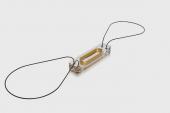Monitoring PA Pressures With CardioMEMS May Help LVAD Patients
Patients who saw their PA pressures drop had improved walk distances and fewer HF hospitalizations, but an RCT is needed.

Patients with left ventricular assist devices (LVADs) may benefit from having their pulmonary artery (PA) pressures monitored with the CardioMEMS system (Abbott), a nonrandomized study suggests.
In this setting, patients who had a significant fall in pulmonary artery diastolic (PAD) pressure had an improvement in 6-minute walk distance and those who maintained a PAD pressure below 20 mm Hg most of the time had a significantly lower risk of heart failure hospitalization, according to the results of the INTELLECT 2-HF study.
The findings were presented as an abstract at the recent International Society for Heart and Lung Transplantation (ISHLT) meeting in Denver, CO, and were published simultaneously online in Circulation: Heart Failure.
“Some LVAD patients have residual heart failure postimplant and may benefit from tailored management with diuretics and/or vasodilators or adjustments of LVAD rotational speed,” lead author Vinay Thohan, MD (Mission Heart HCA HealthCare, Asheville, NC), and colleagues say, adding that this study “suggests that hemodynamic-guided management of LVAD patients with an implantable PA pressure sensor is feasible and may improve functional status and clinical outcomes. Prospective study of this approach is warranted.”
LVADs have been shown to improve survival and quality of life in patients with advanced heart failure, although up to 20% of those who receive an implant don’t have gains in functional capacity, and many will be rehospitalized for heart failure.
Prior studies using right heart catheterization have demonstrated that about one-third of patients with LVADs have abnormal hemodynamics, suggesting that adjustments to medications or to the rotational speed of their device could optimize those measures, according to senior author Stavros Drakos, MD, PhD (University of Utah Health, Salt Lake City). But routinely performing right heart caths just to identify which patients need adjustments isn’t feasible, he indicated.
CardioMEMS, first cleared by the US Food and Drug Administration in 2014, is indicated for use in patients with NYHA class III heart failure, based on the CHAMPION trial, or in patients with NYHA class II heart failure or elevated natriuretic peptides, based on GUIDE-HF. The idea behind testing the system in the setting of an LVAD is that monitoring PA pressures will ease identification of patients who require drug or device tweaks and ultimately improve clinical outcomes. There are, however, limited data to inform this approach.
Thohan et al explored the question in the INTELLECT 2-HF study, a prospective investigation conducted across 22 US sites. It included 101 patients (mean age 61.2 years; 75% men) implanted with either a HeartMate II or HeartMate 3 LVAD (both Abbott), as well as a CardioMEMS sensor. Patients were supported by their LVAD for an average of 21 months before enrollment.
At baseline, PA pressures were elevated, with a mean PAD pressure of 19.8 mm Hg and a mean PA pressure of 27.1 mm Hg. Overall, 38 patients were considered responders based on a drop in PAD pressure, and the rest were deemed nonresponders.
During the 6-month study period, PAD pressure declined from an average of 21.5 mm Hg to 16.5 mm Hg among responders (P < 0.001), with an increase seen in nonresponders (from 18.0 to 20.3 mm Hg; P = 0.002).
Those changes were accompanied by an increase in mean 6-minute walk distance among responders (from 266 to 322 m; P = 0.025), with no change in nonresponders.
Patients who maintained a PAD pressure below the target of 20 mm Hg for most of the study period had a significantly lower rate of heart failure hospitalization at 6 months compared with those who didn’t meet that goal (12.0% vs 38.9%; P = 0.005); they also were less likely to require urgent clinic visits for volume management (0 vs 16.7%; P = 0.004).
The study results suggest that “the guidance that we got from this [CardioMEMS] sensor . . . helped the clinicians in the participating sites to manage their patients better,” leading to improved functional capacity and a reduced risk of rehospitalization, Drakos said.
He acknowledged that those changes cannot be definitively linked to use of the CardioMEMS system because of the lack of control group, saying that this should be considered a pilot study setting up a larger, more-conclusive randomized trial in the future.
Still, “this is the first prospective CardioMEMS study in an LVAD population,” Drakos said, and it suggests that the strategy is beneficial. “We cannot say this with great certainty because we don’t have a control group,” he added, “but that’s what it appears based on this pilot study.”
Todd Neale is the Associate News Editor for TCTMD and a Senior Medical Journalist. He got his start in journalism at …
Read Full BioSources
Thohan V, Abraham J, Burdorf A, et al. Use of a pulmonary artery pressure sensor to manage patients with left ventricular assist devices. Circ Heart Fail. 2023;Epub ahead of print.
Disclosures
- The study was funded by Abbott.
- Thohan reports consulting for Abbott, Impulse Dynamics, and Battelle, and serving on the speakers bureau for Pfizer and Boehringer Ingelheim.
- Drakos reports consulting for Abbott, and receiving research support from Novartis, Merck, the National Institutes of Health, the American Heart Association, the Department of Veterans Affairs, and the Nora Eccles Treadwell Foundation.





Comments